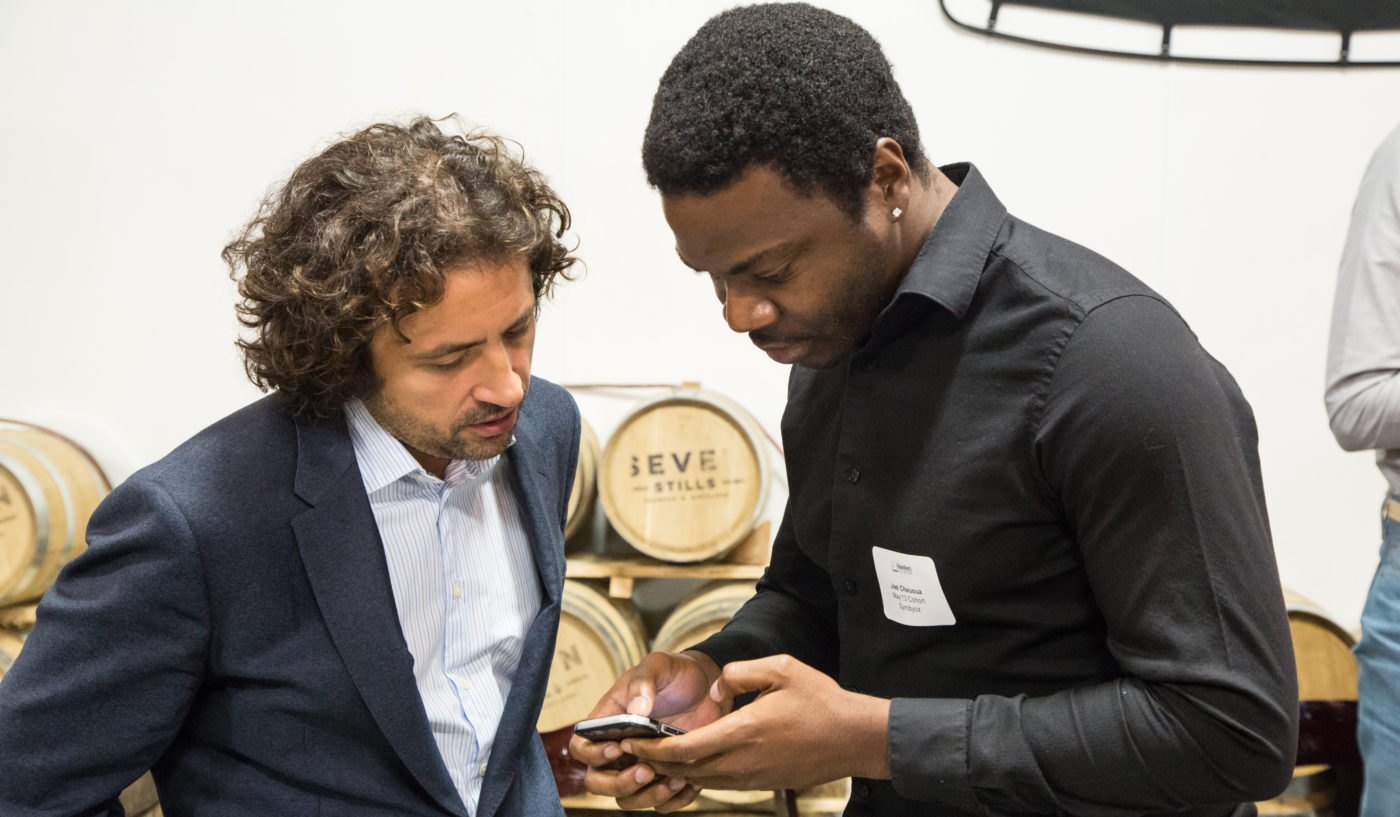
Sameer Gupta has been a member of Founders Network since May 2012. He’s also been a prominent FN member in our Los Angeles Chapter. To receive peer mentorship from Sameer and over 600 fellow Tech Founders, please request an invite and join our global network.
Overview
All startups need to share information with investors to get funding. For early stage startups- those looking for Friends & Family and Seed Funding- the process can be complicated and overwhelming. It often feels easier to explain the idea and company verbally than it is to create a document that can stand alone. This article is meant to give you the resources and confidence necessary to create a Pitch Deck from scratch in one day.
Most Pitch Deck resources online are targeted towards venture capital fundraising. The links below are focused on the same. Those Pitch Decks are informative for earlier stage startups, but often contain more information than available/needed for Friends & Family or Seed Investors.
Who is the Pitch Deck meant for?
Your Pitch Deck is meant for investors who are able to write a check, or connections who can introduce you to someone who is able to write a check. Typical checks at this stage are $10-100k, with total funding rounds of $100k-$1MM.
You can also use this deck for partnerships, sales and recruiting. That version of the deck should omit funding information and any other slides which give too much of a “peek behind the veil” of your company or financials.
What do you need to start?
Nothing. You already have most of the information to create a pitch deck in your head. You don’t need your entire team or an adviser to start. Just block off a 2-3 hours period of time and follow the instructions below.
How do I make it look good?
If you are happy with the content, you can use a variety of online resources to make your Pitch Deck look good. Here are some options:
Where can I see examples of great Pitch Decks?
What else should I review before starting my Pitch Deck?
- What is a Pitch Deck?
- Lessons From A Study of Perfect Pitch Decks
- What We Learned From Designing 200 Pitch Decks
- Peter Thiel’s Pitch Deck Template
What’s the first step?
Begin with an outline. That’ll give you structure and a sense of accomplishment as each slide gets done. Here is the outline:
- Title Page
- Problem
- Solution
- Product
- Target Market and Size
- Business Model
- Market Landscape
- Traction and Timeline
- Team
- Funding
- Ending Slide
How do I create the slides?
Use Keynote or Powerpoint to create a slide presentation. Don’t worry about the formatting or layout at this point. You’ll be sending this to graphics at the end.
What information do I put in each slide?
We’ll go slide-by-slide so that you can know exactly what to include in each section.
All slides should include:
- Top: Company Name (except the first and last slide, which will have your company name in the center section)
- Bottom: © Your Company Name PRIVATE AND CONFIDENTIAL
- Bottom: Slide Number
- Never include paragraph text. You can include a sentence, but use bullet points / numbered items for the rest of the information.
Slide 1: Title Page
- Company Name
- Company Slogan: Should be informative and catchy (if possible)
Slide 2: Problem
- Description of the current state of the industry.
- You want to draw the reader into the experience, so that they leave with empathy for the pain point(s) you will be solving with your product
- Image of the problem. Find some placeholder clipart to start
Slide 3: Solution
- Mission: Answer the question- What if there was a better way to do this?
- Vision: Answer the question- How does this better way fundamentally affect the way people and/or organizations interact in the future?
- I suggest going through the following exercise to create a positioning statement that can be used on this slide: Positioning Your Startup Is Vital
Slide 4: Product
- Image of Product
- Flow Chart of how your product interacts with its users
- Key features of your product
- Note: Create a video for your product. This is the easiest way to explain what you are doing. You should send a video link in any email to an investor.
Slide 5: Target Market and Size
- Who are your early adopters / first users? Describe them in general
- Be specific: Create an example of your ideal user to give the reader a clear picture of someone or a company that will use your product
- What larger market do your early adopters fit into?
- How large is that larger market? Quantify the number of people or organizations. Start with the United States, and if you can find easy global numbers, include those afterwards.
- How much does your typical user spend on similar products?
- Multiply the number of users by the amount they spend on similar products to get your Market Size.
Slide 6: Business Model
- Create a funnel which shows:
- Target Market
- How you will engage your potential users (advertising, sales, etc.)
- How and how often your users will use your product
- Why your users will continue to use your product
- Why existing users will create organic growth / virality
- How much your users will pay for your product
- Unit Economics: Break down your value proposition into its simplest form
- Revenue per User – Cost for User Acquisition – Costs for Product per User = Profit per User
- Notes:
- Most funnels online are Sales Funnels. Do a Google Search (images) to see what your funnel should look like. Use this imagery to guide your Business Model funnel.
- If you are having a hard time with putting together a funnel, feel free to use a flow chart.
- If you are a free-to-use product that runs on advertising, then you will need to add an additional line items that quantifies engagement (hours of use) by expected ad revenue (CPM, CPA, affiliate marketing, etc.) See definitions here:
What are CPM, CTR, CPA and CPC
Slide 7: Market Landscape
- Many startup companies don’t see competition in their industry. They see companies in their space are potential partners instead. While this could prove true, it is useful to think of the other companies’ existing products are competitive to your product. Also, investors want to know that you have done a thorough overview of the industry and are aware of any/all products and companies that may be similar to yours.
- Competition: You can use an XY axis with relevant characteristics to position your competitors in a visual manner, accentuating your advantage over existing solutions. Slide 24 of the following presentation is a good visual example of what you are trying to do: Tear Apart Your Competition
- Competitive Valuations: Include companies that have exited (been acquired or had an IPO) with valuations and dates of transactions.
Slide 8: Traction and Timeline
- Development Timeline:
- Development Start
- Testing
- Pilot
- Launch
- Product-Market Fit
- Final V1 Product
- Sales Timeline:
- Early Adopters
- Usage Target #1
- Revenue Target #1
- Usage Target #2
- Revenue Target #2
- Traction:
- Users
- Sales
- Active
- In progress
- Leads
- Quotes
- Customers
- Partners
- Industry Influencers
- Press
- Patents
- Notes:
- Show growth (if you have it). Make sure to include increasing numbers when available, to demonstrate the upward trajectory of your product’s adoption.
- Describing traction can be hard. If you are very early, you may think you don’t have traction. That is not true. You should include any/all feedback you have received at this point, like quotes from potential partners, sales, or industry experts. If you don’t have those yet, go ahead and get them.
Slide 9: Team
- Founders:
- Picture
- Name
- Position
- Logos of Recognizable Organizations (colleges/universities, previous companies)
- Bullet-pointed line of key achievements
- Bullet-pointed line of responsibilities within company
- Key Personnel:
- Name
- Position
- Bullet-pointed description of key achievements
- Bullet-pointed line of responsibilities within company
- Advisers:
- Group Together under “Advisers” Section Title
- Name
- Organization
Slide 10: Funding
How much money have you raised so far? If you haven’t raised money, don’t worry! Just skip this step.
- Current Round Details:
- Sources and Uses of Funds
- Total Amount of Funding Sought
- Expected Expenditures
- Development (should be 50%+)
- Marketing and Sales
- Overhead (should be 20%-)
- Burn Rate: How much money you expect to spend each month
- Runway: How long you expect this round to last to fuel your growth
- Sources and Uses of Funds
- Notes:
- You should not include this slide when sending this deck to anyone other than a potential investor.
- Many people omit this slide, and include these details in an email to potential investors.
- Most investors do not want to be the first money into a round. You should secure some investment to start, ideally from an “anchor angel”, so that when an interested investor asks, you can state that you have a certain % of your round secured.
- You should probably have a “rolling round” wherein you can take any investment as it is committed. At such an early stage, waiting for the entire round to be committed before cashing a check is usually not feasible.
- Mention investors that are interested as being “soft circled” if they have indicated an amount of investment, but they have requested additional time to review the investment.
Slide 11: Title Page
- Company Name
- Company Slogan
- Contact Information:
- Your name
- Phone number (optional)
Who are you?
My name is Sameer Gupta. I’ve been starting businesses and creating Pitch Decks for 20 years. I attended the Management and Technology Program at the University of Pennsylvania (Wharton + Engineering), founded the Weiss Tech House and Harvard-Westlake Venture, and have participated in various accelerators and incubators. My companies (Commercial Streaming Solutions, Golfstream, RivalMe, The h.wood Group, SimpleC), have raised $20MM+ in Friends & Family and Seed Funding. I regularly help friends create Pitch Decks.
I’d like to thank Founders Network for some of the resources listed above, particularly Todd Aaronson who put together the list of links to sample pitch decks. I’d also like to thank Founders Network Member Nathan Beckford, Founder & CEO of Foundersuite, for sharing How to Build the Ultimate Pitch Deck, linked below:






